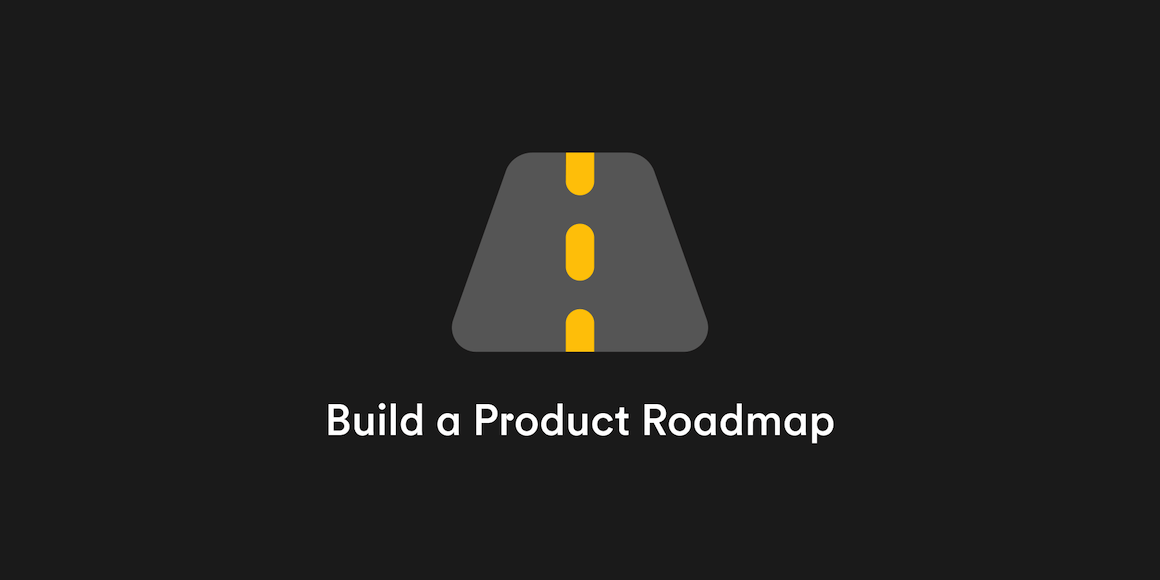
Your high-level strategic planning is done. (Victory!) Before you begin the journey of delivering your customers a new or improved digital product, you need to build your product development roadmap.
Creating a clear product roadmap is foundational to the success of any new product. Whether you’re creating the latest new doodad or useful app, if people will be using your product, it needs a development roadmap.
So what exactly does a product roadmap entail, and why is it so important? Let’s take a short dive in and look at the most crucial elements.
What Is a Product Roadmap?
As the proverb goes: “The best laid plans of mice and men often go awry.” That’s why we need product roadmaps.
Translation: A product roadmap serves as the ultimate strategic communication tool in a product manager’s arsenal. It includes clear deliverables and expectations for where the product is going and why.
Your product roadmap is also a living, breathing thing. It’s not a one-and-done effort, and it will continue to evolve as you learn what is needed for success along the way.
“A product roadmap is about communicating the why. It’s about the ultimate destination (the vision) and the major steps that the team intends to take along the way (goals to be reached, problems to be solved). A roadmap should not delve deeply into the what and the when. It should stay at the why level. It should inspire your teams to then develop a release plan, a delivery plan, or a project plan for how to deliver that vision.” —Bruce McCarthy, author of Product Roadmaps Relaunched
Benefits of Building a Product Roadmap
The most effective way to communicate how a digital product will evolve is through a software development roadmap. It should clarify how the product will continue to meet business goals.
With a well-developed product roadmap—or development roadmap—in hand, your company gets a lot of benefits in several avenues. Your product roadmap should:
- Provide visibility for anyone in the company, and should be clear to all stakeholders
- Align and excite everyone about the product’s strategy and potential
- Serve as a coordination tool for goals, priorities, and resource allocation
Multi-Department Coordination
A product roadmap is literally for everyone in the company. From customer support to sales, other teams will use your product roadmap in various ways.
It helps teams understand their crucial role and contributions to the project, including customer service teams knowing more, so they can provide even better service. Engineers can use the roadmap to better prioritize key features based on the product and technology decisions. And decision makers can more thoroughly identify the risk and gaps associated with the project.
How to Build a Product Road Map in 4 Steps
Answering the question “How do I build a product roadmap?” is going to be different for each organization. However, developing a product roadmap breaks down into four crucial components. If you make sure you cover all four, your product roadmap should be a useful tool for everyone across your organization.
1. Strategy, Strategy, Strategy
Don’t make a move without a solid strategy. What is your “why”? What is the A-No. 1 reason for the product? If you’ve already completed your high-level strategy, some of these steps will already be done! (Be an early bird—start thinking strategy early.)
When projects have lots of moving parts, it can be a challenge to keep your heads focused on the ultimate goal. Understanding the why, and understanding strategy, is the first crucial step.
2. Research Your “Why”
Now comes the research. What do you need to do to answer the “why”?
This stage will include:
- Looking at market trajectories
- Creating value propositions
- Assembling audience demographics information
- Developing user stories
- Defining effort constraints so you can plan on how to overcome them
- Identifying your vision, objectives, and product strategy
3. Create SMART Goals
You can’t have a successful product roadmap without defined goals. Make sure you use the SMART goal approach to clearly define success metrics. SMART goals must be:
- Specific
- Measurable
- Attainable
- Relevant
- Time-based
Once your SMART goals are defined, identify each team member’s needs to accomplish their goal. Then, you can identify roles and responsibilities.
Pro tip: Audience needs will depend on what you include in your product roadmap—or rather, the presentation of that roadmap. Make it easily digestible for and relevant to each audience. The presentation of your roadmap to your customer service team will have a different focus than the presentation to leadership.
4. Set Clear Product Initiatives
It’s also crucial to make sure you set clear product initiatives so all stakeholders know how each specific release and feature relates to specific strategies and goals. This means defining features and requirements, and it should include reviewing and managing ideas coming in from customers and customer-facing team members.
Setting initiatives will help you to create an epic so you can break down tasks based on the needs of end users. A few musts:
- Remember to include categories of work that span across multiple releases
- Each release should typically include multiple features launched at the same time
- Make new or improved features very specific
- Set a flexible timeline that has room to regularly change while also showing an overall visualization of when releases will occur
Note: At this stage, if you haven’t already determined (and potentially launched) your minimum viable product (MVP), then you need to check out this resource on determining your MVP.
Quick Tips for Building a Product Roadmap
Product roadmaps are going to be different based on the organization, project, and company goals. But there are a few general quick tips anyone can use.
Product Roadmap Quick Tips
- Present a visual product roadmap, which means having different versions
- Share your product roadmap and refer to it often
- Be flexible—again, this is not a one-and-done document
- Regular check-ins with your product roadmap are vital
Don’t forget: Tailor to your audience. Are you struggling to determine how to tailor for your different audiences? Roadmunk tells you how to present a roadmap to get buy-in.
Understand Critical Aspects When Building Your App
If you have a team of product managers, either on a product development team or within your IT and software development team, consider owning this for all products. Go to the bottom of this document to find several software options. (Your partner will likely include this when working with you on specific projects, too.)
If you don’t have endless humans with product management experience or capacity, consider working with a partner that will help you every step of the way. Start by arming yourself with more information and check out What to Expect When Building Your App.
